
 Flash News
Flash News

Fjoralba Dizdari
"800 tons of waste, suspected to be toxic, that were sent from the Port of Durrës to Southeast Asia are being returned to Albania"—this was the news that was published in the American media, Bloomberg. This then produced a series of reactions, raising the alarm.
The ships with the toxic waste left the Port of Durrës on July 4, were blocked in Singapore, and are expected to return to Albania in September 2024, but there are many questions on this issue.
Where did these tons of waste come from, and what was their origin?
How did they board, and how did the whole process happen in the port of Durrës, where hundreds of tons of poisonous substances were deposited in an open environment, endangering people's lives?
What happens to them now that they will return to Albania?
How dangerous are they?
How will they be treated?
And does Albania have the capacity to treat and dispose of these toxic wastes without endangering the lives and health of citizens?
Why should we learn about this event from foreign media?
How are the labels of the containers containing the hazardous substance replaced?
What are the piles of ash currently left in the open environment in the port of Durrës?
Why doesn't anyone analyze them?
What is the certainty that thousands more tons have not been thrown into the rivers or on the ground? When you don't check at the Albanian exit, do we also have a problem with the traffic at the entrance?
What is the penultimate shipment that left Durrës for China on April 2, 2024—the shipment that is stuck in a Chinese port near Hong Kong?
(115 containers from Albania started from the same port and were blocked in China. The cargo is known to have high levels of lead and other pollutants, proving that it is toxic. All this happened under the nose of Albanian authorities.)
According to the Ministry of Tourism and Environment of Albania, no authorization was given to export 800 tons of suspected hazardous waste, which departed from the Port of Durrës on July 4, 2024. However, it is not shown who licensed the company Sokolaj shpk for the transport of 2 years of hazardous and non-hazardous waste.
In the specific case, the company Sokolaj shpk. Was responsible for the 102 containers headed for Asia as reported by the non-governmental organization against environmental pollution "Basel Action Network" based in the USA; they are suspected to be toxic waste of high hazard that the labels of the containers have been replaced, and that the countries in the transport network were not notified of the toxic load thus violating the Basel Convention, the United Nations Treaty, which regulates the trade of hazardous waste. Signatory countries of the convention, one of which is Albania, are not allowed to send toxic waste to another country unless they receive prior approval from the host country.
The Sokolaj Shpk company has not reported hazardous waste and has shipped it to the Danish company Maersk. Maersk reports that it was not aware that the containers contained harmful substances. To dispel doubts, it has decided to cooperate with the authorities in Singapore, who have stated that "In accordance with the Basel Convention, Singapore is facilitating the return of containers."
Suppose it is confirmed that it is about the ash coming out of the chimneys of the metallurgical factories. In that case, the consequences are not only political but also serious for people's health and the environment. This dust contains a high percentage of metals such as lead and chromium and other chemical residues that cause cancer. It is also a problem for children and people with chronic diseases!
Authorities in Albania stated that Kurum, or the purchasing company Sokolaj Shpk, had not been notified about the load and its type, so they billed Kurum for the amount of suspected toxic waste.
What's going on?
Meanwhile, the head of the Basel Action Network confirms for Voice of America that "the frequent export of this material from Durrës raises doubts that it does not come only from the Kurumi factory, as this factory is not large enough to produce such quantities of high EAF dust."
From the Port of Durrës, according to the Basel Action Network, every three or four months, the material that is suspected to be poisonous dust known as 'EAF,' which comes out of the chimneys of metallurgical factories, is exported, according to them they got this data from a whistleblower, from the Port of Durrës, who has provided evidence for this.
How is it possible that none of the state agencies have performed any of the tasks the National Security Law assigned to them?
It was allowed openly in violation of the law (No. 10 463, dated 22.9.2011, "On Integrated Waste Management) or other acts issued in its implementation (which clearly define the way of transporting these items), ensuring the undisturbed transport and storage of this dangerous substance in the Port of Durres.
Ministry of Environment, Ministry of Infrastructure, Port of Durrës, National Information Service, State Police, Customs Directorate. No one has an answer for this issue.
Already, certain segments of the state administration are trying to distract the attention, not only of the general public, by placing the blame inside and outside the country. At the same time, Albania is being accused in the international arena.
Regarding the piles of dust currently deposited in the eastern quay, the state institutions must definitely take measures to ensure the hazardous waste there. Ships that transport packaged or unpackaged food items are processed in this port and may be contaminated by the natural disposal of these wastes.
The Port of Durrës passes thousands of local or foreign tourists who have chosen our place to rest every day. The presence of this dangerous substance contaminates the environment, which in turn severely damages the health of residents or tourists living in the city of Durrës.
Also, the precipitation of this substance from contact with atmospheric agents (rain, dew, etc.) poisons the waters that pass near this deposit site (such as marine waters) during the middle of the tourist season, when the city of Durrës is full of tourists or residents who bathe near this port.
Latest news


Not only the body, swimming also helps the brain
2025-07-05 21:02:49
"Be careful with the water", Alimehmeti warns about the health risks of summer
2025-07-05 20:39:10
PSG beats Bayern Munich 2-0, advances to Club World Cup semifinals
2025-07-05 20:19:38

Two vehicles collide on the Elbasan-Peqin axis, drivers injured
2025-07-05 19:26:29

What does Zelenskyy have more than Zegjineja?
2025-07-05 18:45:26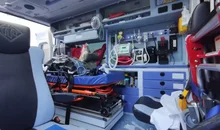

Fiscal peace, but at a cost
2025-07-05 18:00:10
'Bankers' tax evasion, Chinese CEO and former director jailed
2025-07-05 17:39:21
Kyle Walker joins English club on two-year deal
2025-07-05 17:20:24
Two cars collide on the Saranda-Delvina axis, 4 injured
2025-07-05 17:05:29
Touching gesture! Liverpool will pay Jota's family's salary until 2027
2025-07-05 16:45:18
The zodiac signs that cheat most often
2025-07-05 16:25:53

"I asked for the dismissals", Dredha tries to soften Rama's 'blow' in Vlora
2025-07-05 15:48:49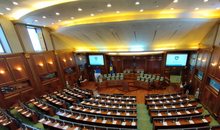
Bomb threat in Parliament, prosecutor: It was a lie
2025-07-05 15:22:28

Bardhi: The recount revealed how greedy Zeqine Balluku is in stealing
2025-07-05 14:44:29
Knife wound on the secondary road Tirana-Durrës, perpetrator sought
2025-07-05 14:37:54
Tears and pain, Diogo Jota is escorted to his final home
2025-07-05 14:21:34
Success starts with yourself! Simple ways to invest in personal development
2025-07-05 13:58:50
Unlicensed firearms found in apartment, 50-year-old arrested in Lushnje
2025-07-05 13:43:11

Tirana Court remands Skerdi Sina to prison
2025-07-05 12:59:34
Cocaine laboratory in Greece, here are the Albanians arrested and wanted
2025-07-05 12:40:16
Directed Justice/Vangjeli: SPAK does not investigate any scandal involving Rama
2025-07-05 12:22:03

Bomb alert, Police remove MPs and media from Kosovo Parliament building
2025-07-05 11:48:16
"The will of the people" and the irony of ordered resignations
2025-07-05 11:32:05
Summer drowning risk: How to enjoy the water without risking your life
2025-07-05 11:20:27
Fire situation in the country, 16 fires reported in 24 hours, 4 still active
2025-07-05 11:07:04
Car hits pedestrian at white lines, injured in serious condition in Vlora
2025-07-05 10:59:58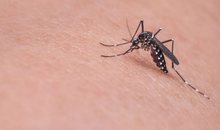
Mosquito-borne diseases are a growing problem in Europe
2025-07-05 10:44:13



One of Sweden's most dangerous and wanted criminals arrested in Turkey
2025-07-05 09:38:29
Foreign exchange/ How much foreign currencies are bought and sold today
2025-07-05 09:18:38

"Don't be influenced by the opinions of others", today's horoscope
2025-07-05 08:40:50

Morning Post/ In 2 lines: What mattered yesterday in Albania
2025-07-05 08:02:07

Trump says he's ready to raise tariffs to 70% on some countries
2025-07-04 22:35:52
Tre shenjat e zodiakut që do ‘pasurohen’ në Korrik
2025-07-04 22:05:09
Gaza War: Hamas Accepts US Proposal for 60-Day Ceasefire
2025-07-04 21:50:10
Autocracy in Albania, Fuga: Governance has gotten out of control
2025-07-04 21:40:51
Meta: Agriculture on credit, the new fraud!
2025-07-04 21:26:39
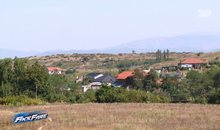



Vote recount in Durrës ends without changes
2025-07-04 20:12:54
Gas station explodes in Rome, 25 injured (VIDEO)
2025-07-04 20:00:20

These afternoon habits often sabotage weight loss
2025-07-04 19:39:28
Former Arsenal player Thomas Partey accused of rape
2025-07-04 19:24:21
Shepherd disappears without a trace in Delvina
2025-07-04 19:14:31

Bardho gave Zegjine's mandate/Braho: Unfair! It violates the electoral system
2025-07-04 19:01:08


Rapid developments in the Sultanates!
2025-07-04 18:00:06



Italy tightens rules for skateboard traffic
2025-07-04 17:20:18

Unusual for the time, dense fog covers the coast of Vlora
2025-07-04 16:48:01


Accident on the Shkodra-Lezhë axis, one dead and 3 injured
2025-07-04 16:14:19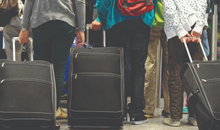
Albania with fewer requests for asylum and Albanian citizenship in 2024
2025-07-04 16:06:57

Albania last for quality of life, DP: Technical government is the solution!
2025-07-04 15:42:30
Nico Williams says "No" to Barcelona, signs with Athletic Club until 2035
2025-07-04 15:33:35
Fires in the country, four fires are still active, what is the situation?
2025-07-04 15:24:20

Summer brings big changes for these 4 zodiac signs
2025-07-04 15:00:04
Osmani: MPs need to agree to a secret ballot for the Speaker of Parliament
2025-07-04 14:51:09
Serious accident on the Peqin-Elbasan axis, two injured
2025-07-04 14:37:56

GJKKO leaves in force the security measure for the head of the KPP
2025-07-04 13:58:17
Who will replace Ilir Meta and take over the leadership of the PL?
2025-07-04 13:50:36
Berisha: Dismissal of directors in Vlora, another act of 'scapegoats'
2025-07-04 13:41:46



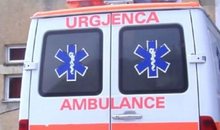
Librazhd/ In a serious psychological state, the young man consumes pesticides
2025-07-04 13:05:07


Weapons trafficked from Kosovo to Albania, two arrested, 8 pistols seized
2025-07-04 12:33:28
Konsumimi i tepërt i çokollatës, ja cilat janë dëmet që shkakton në organizëm
2025-07-04 12:23:35
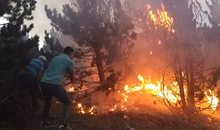
Fires in the country, 21 fires in the last 24 hours, 4 still active
2025-07-04 12:00:19
WB calls for debt transparency: Albania to publish details of every loan
2025-07-04 11:50:05
